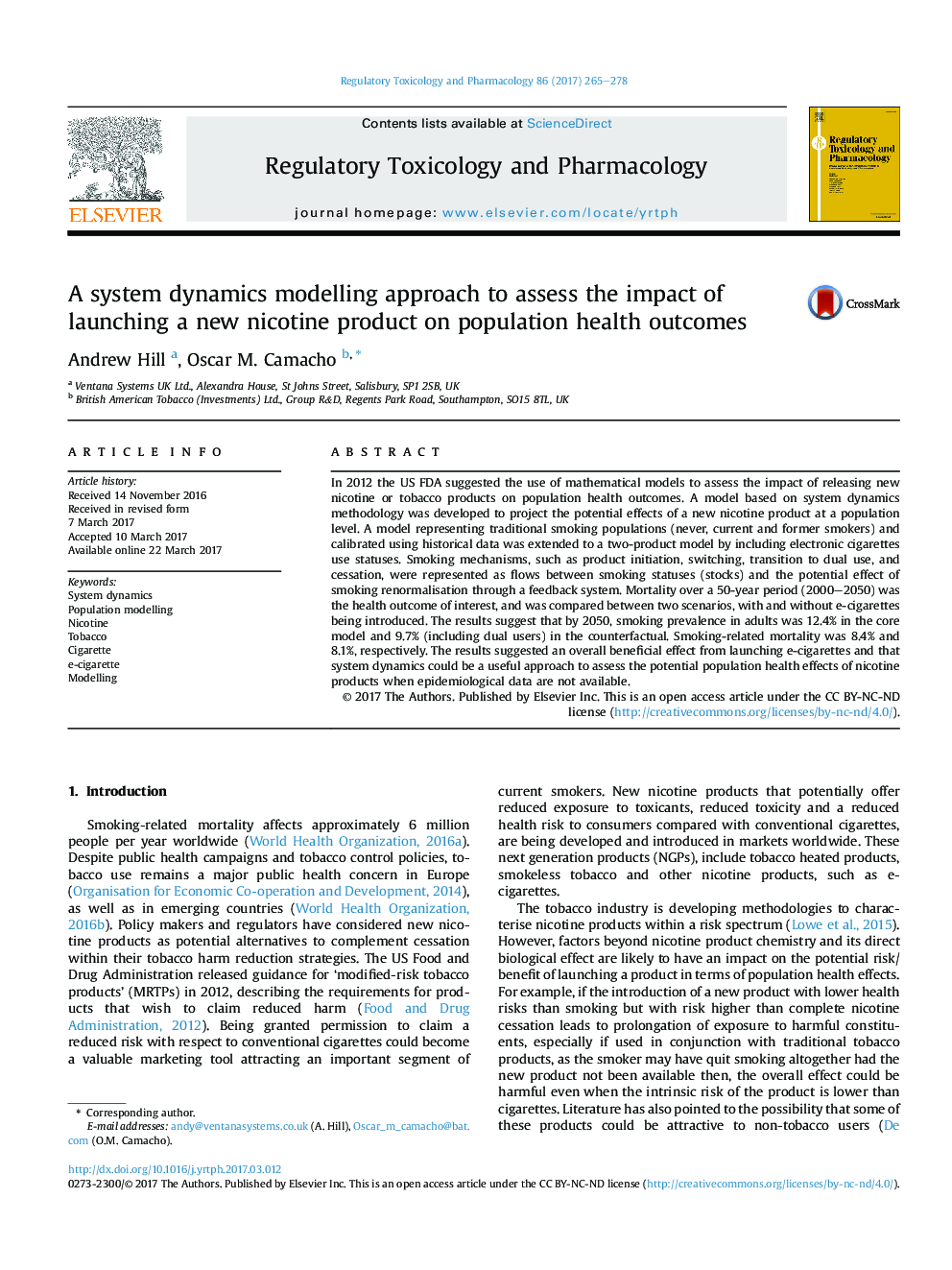| Article ID | Journal | Published Year | Pages | File Type |
|---|---|---|---|---|
| 5561279 | Regulatory Toxicology and Pharmacology | 2017 | 14 Pages |
â¢Scientists have developed model to assess the population health effects of launching new products.â¢The model reinforces views that eCigarettes use is likely to benefit UK population health.â¢Model forecast cigarette smoking prevalence falls from 12.4% to 9.7% in counterfactual scenario.â¢Conservative inputs with no risk reduction for dual users.
In 2012 the US FDA suggested the use of mathematical models to assess the impact of releasing new nicotine or tobacco products on population health outcomes. A model based on system dynamics methodology was developed to project the potential effects of a new nicotine product at a population level. A model representing traditional smoking populations (never, current and former smokers) and calibrated using historical data was extended to a two-product model by including electronic cigarettes use statuses. Smoking mechanisms, such as product initiation, switching, transition to dual use, and cessation, were represented as flows between smoking statuses (stocks) and the potential effect of smoking renormalisation through a feedback system. Mortality over a 50-year period (2000-2050) was the health outcome of interest, and was compared between two scenarios, with and without e-cigarettes being introduced. The results suggest that by 2050, smoking prevalence in adults was 12.4% in the core model and 9.7% (including dual users) in the counterfactual. Smoking-related mortality was 8.4% and 8.1%, respectively. The results suggested an overall beneficial effect from launching e-cigarettes and that system dynamics could be a useful approach to assess the potential population health effects of nicotine products when epidemiological data are not available.
